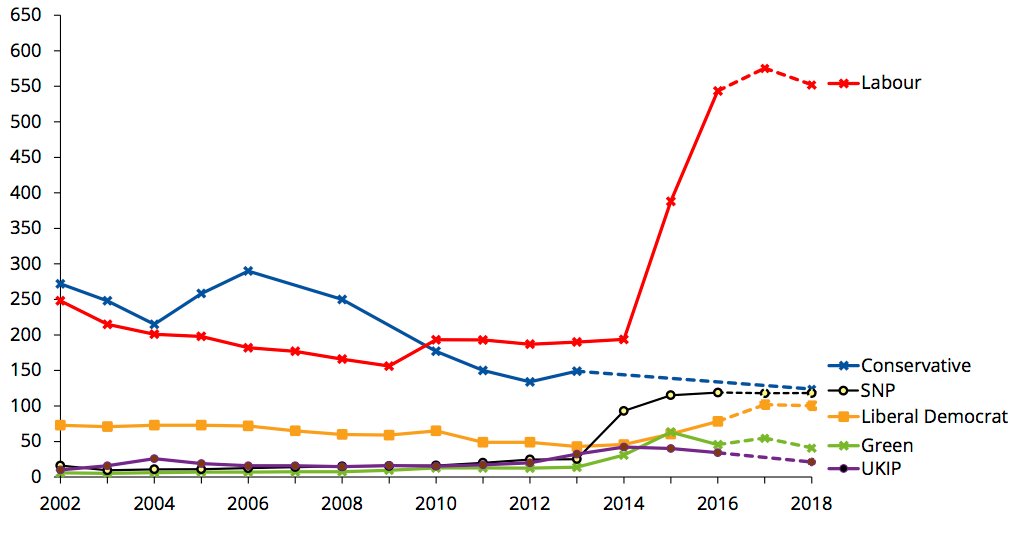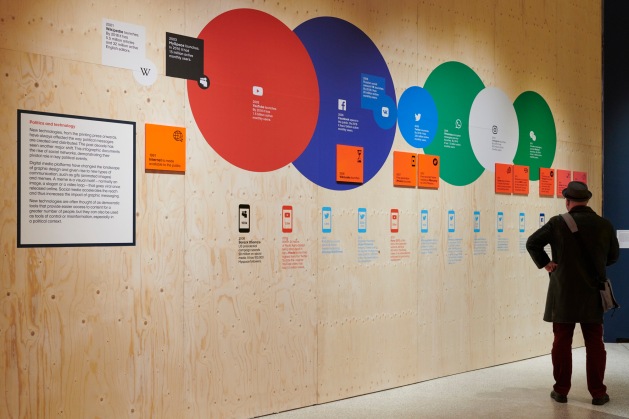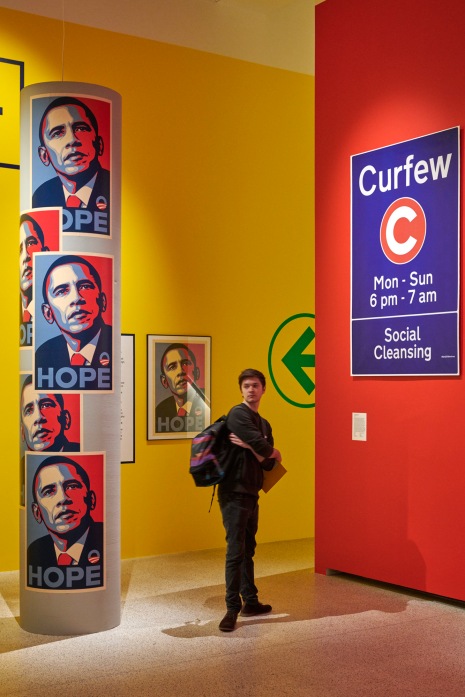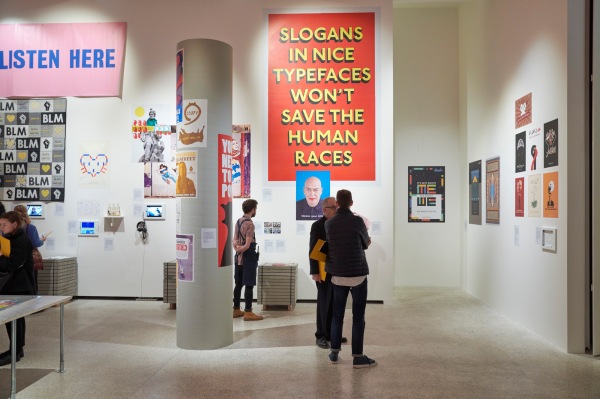Cornelia Parker (CBE, RA) is a very well-known and successful figure in British art. Born in 1956, she’s become famous for her ‘immersive’ i.e. BIG works. Above all she is a conceptual artist. What is conceptual art? According to the Tate website:
Conceptual art is art for which the idea (or concept) behind the work is more important than the finished art object. It emerged as an art movement in the 1960s and the term usually refers to art made from the mid-1960s to the mid-1970s.
In some exhibitions you react to the painting or sculpture immediately, as an object in space which fills your visual cortex with sensations and impressions. You don’t necessarily have to read the wall labels. With conceptual art it is almost always vital to read the wall label in order to understand what you’re looking at. Sure, you could still respond naively and sensuously to the work’s appearance but you would be missing out on 99% of its meaning and intention.
The wonderful wall labels
This major retrospective of Parker’s career brings together almost 100 works, spanning the last 35 years. So that’s quite a lot of reading you have to do in order to understand almost every one of these pieces.
But a major feature of the exhibition is that the wall labels are written by Parker herself. Most wall labels at exhibitions are written by curators who, in our day and age, are obsessed with the same handful of issues around gender and ethnicity and lose no opportunity to bash the visitor over the head with reminders of Britain’s shameful, imperial, racist, slave-trading past etc etc.
So it is a major appeal of this exhibition that, instead of every single piece explained solely in terms of race or gender – as it would be if Tate curators had written them – Parker’s own wall labels are fantastically interesting, insightful, thought-provoking insights into her way of thinking and seeing the world. Instead of the world of art being reduced to a handful of worn-out ideas, Parker’s wall labels are as entertainingly varied as her subject matter, full of stories, anecdotes, bright ideas, explanations of technique, aims, collaborations.
They give you a really privileged insight into her worldview and into her decades’-long ability to be interested, curious, take everyday objects and have funny and creative ideas about how to transform them. After spending an hour and a half working through her thought processes for the different pieces, some of her creative spirit begins to rub off on you, you begin to see the everyday world the way she does, full of opportunities for disruptive and fun interventions. In this respect, this exhibition is one of the most genuinely inspiring I’ve ever been to.
Types of work
The exhibition includes immersive installations, sculptures, photographs, embroidery and drawings, as well as four large-scale, room-sized installations, and two rooms showing her art films. At the simplest, physical level, the pieces can be divided into two categories: Small and Large. Examples of the small will serve as an introduction to the large.
Introductory
In the downstairs atrium of Tate Britain stands a single sculpture, preparing you for the exhibition ahead.
It is, of course, a life-size cast of Rodin’s sculpture, The Kiss, wrapped up in a mile of string. A vague symbolic gesture towards ‘the ties that bind’ people in relationships, maybe. In the nearby wall label Parker describes this as a ‘punk gesture’, which I found very significant. It’s the only time she mentions punk but she was just 20 when it hit, maybe at art school by then, so its attitude of really offensive, in-your-face irreverence must have taken her art school by storm. The point is, various later wall labels repeatedly say that she is interested in destruction and violence – but not violence against persons, against things. Her art does violence to inanimate objects in all kinds of inventive, creative and often very funny ways.
But there is, as so often, a further twist to the tail. Wrapping The Kiss in string is a relatively tame thing to do compared with Dada, Surrealist, Duchamp provocations from 100 years ago. It becomes more interesting when you learn that some opponents of conceptual art within the art world, fellow young irreverent artists, vandalised the original version of The Distance by cutting up the string into short sections, thus ‘liberating’ the sculpture.
And best of all, that Parker was undaunted and promptly gathered up all the cut-up pieces of string and tied them back together around a mysterious object at the centre, ‘a secret weapon’, which is unnamed and unknown.

‘The Distance (with concealed weapon)’ by Cornelia Parker (2003) © Cornelia Parker (Photo by the author)
Small
I’ll jump straight in and give examples.
‘The Negative of Words’ (1996)
Parker realised that when an engraver engraves words into silver, for example into a cup like the Wimbledon champion’s cups, tiny fragments or curls of silver are generated. This piece is a pile of the shavings thus created. Parker contacted a silversmith, who agreed to her proposal, and it took several months to accumulate enough shavings for her to create the little mound, with sprinkled outliers, which we see on display here. As she points out, each sliver represents a letter, is the trace of a letter, is the inverse of writing, of language. They are absences made solid. This idea really resonated with me as I admired this carefully created little mound and its sprinkled outliers.
‘Luck Runs out’ (1995)
In the case next to it is an old dictionary. Under careful supervision, Parker arranged for a shotgun loaded with dice to be fired into the back of the book. The die penetrated to different depths into the text and jammed most of the pages together. As it happens the post-shooting dictionary automatically fell open at a page about ‘luck’. Hence the title, The luck of the draw. The roll of the dice.

‘Luck Runs Out’ and ‘The Negative of Words’ by Cornelia Parker © Cornelia Parker (Photo by the author)
Apparently it’s part of a series titled ‘Avoided Objects’, so-called ‘object poems’ which ‘explore the fractured, unmade and unclassified’. The series explores ‘the denied and repressed’, which sounds a bit hackneyed and stale until she goes on to specify what that means in practice – the backs, underbellies or tarnished surfaces of things, which is much more interesting. Hence shooting this dictionary ‘in the back’.
‘Embryo Firearms’ (1995)
While in Hartford Connecticut, Parker asked to visit the factory where the famous Colt 45 handgun is made. She was surprised to discover the process began with blank featureless gun-shaped casts, before any working parts were added. She asked if she could have one and the Americans, obliging as ever, gave her two and gave them a nice smooth industrial polish. Adding the word ’embryo’ to firearm juxtaposes the birth of the gun with the general idea of the birth of a human being, alongside a tool which might potentially bring it to an end.
‘Embryo money’ (1996)
Fascinated by money, Parker asked permission to visit the Royal Mint in Pontyclun, Wales. She asked for some samples of coins before they were ‘struck’ i.e. had the monarch’s face, writing, value, corrugated edges and everything else added – just the blank dummy coins. Embryo money, before it has accrued any of the power which so dominates all our lives.

‘Embryo Firearms’ (1995) and ‘Embryo money’ (1996) by Cornelia Parker © Cornelia Parker (Photo by the author)
See what I mean by ‘conceptual’. You could relate to these just as intriguing objects, but the stories behind them – the anecdotes of Parker’s expeditions to interesting and unusual places to see industrial processes in action – add immeasurably to the enjoyment.
‘Exhaled cocaine’ (1996)
Parker developed a relationship with His Majesty’s Customs and Excise. She visited and got to know them at their Cardiff headquarters over a period of several months. One of the many, many types of contraband objects they confiscate are drugs. Parker persuaded them to let her have a seizure of cocaine after it had been incinerated. A million pounds worth of cocaine turned to ash, which is on display here, as a sad little pile.
In her wall label, Parker adds the coda, which you’d never have got from a curator, that she really loves the way Customs and Exercise destroy things in such a theatrical way, steamrollering fake Rolex watches or alcohol. ‘Like me, they are often symbolically killing things off.’ This kind of casual, candid opinion is a lovely insight into her way of thinking.
Inhaled cliffs’ (1996)
A personal favourite was ‘Inhaled cliffs’. She asked Customs about methods people use to smuggle stuff into the country, especially drugs, and discovered that some drugs can be used to ‘starch’ sheets, so a set of innocuous looking sheets turn out to be drenched in heroin, cocaine or other illicit substances which can be extracted once they’re safely in the country. This notion inspired ‘Inhaled cliffs’ in which Parker starched sheets with chalk from the white cliffs of Dover, ‘smuggling’ those great symbols of England into bed with her. She is tickled by the notion of ‘sleeping between cliffs’.

‘Exhaled cocaine’ (1996) and Inhaled cliffs’ (1996) by Cornelia Parker © Cornelia Parker (Photo by the author)
I’m focusing a bit much on these objects in cases. There were conventional things attached to the wall, prints, flat objects treated in various ways. Photographs, for example. On her way to her studio past Pentonville Prison she noticed workmen plastering cracks in the perimeter wall, creating vivid white abstract shapes. They then started to whitewash the wall as a whole so, before these irregular, crack-shaped gestures disappeared, she quickly took photos with her phone and developed a set of 12 prints which are hung here, titled ‘Prison Wall Abstract’.
Or the ‘Pornographic drawings’ (1996). As part of her ongoing conversations with HM Customs she asked for examples of contraband and they gave her (along with the bag of cocaine ashes) chopped up lengths of pornographic film. Parker dissolved the fragments in solvent to create her own ink. She used this ink to create Rorschach blots i.e. poured them on one side of a piece of folded paper, pressed the other side down on the inked side and reopened it to have a symmetrical image. For some reason, all the ones she made (or chose to display) came out ‘to be particularly explicit’.
It dawns on me that these works are beyond ‘conceptual’ in the sense that they might better be described as anecdotal. Often there isn’t a grand concept, project or goal behind them – there is happenstance and accident. Seeing an opportunity to do something interesting and seizing it.
The other obvious thing is that she’s about transforming objects from one state to another. She starts with ‘found objects’ – gun moulds, unstamped coins, porn movies, cocaine and so on – and, in the examples I’ve given, doesn’t even transform them herself, but recognises their artistic potential.
Medium
Using this technique of remodelling the existing and everyday, is a middle-sized work titled ‘Black Path (Bunhill Fields)’ from 2013. Parker describes playing hopscotch on pavements with her daughter. This led her to pay attention to pavements and to notice the antiquity of the old stone paving in Bunhill Fields near Old Street. She got permission to pour liquid rubber into the cracks in a path through Bunhill Fields. When the rubber dried she used the mould to make a metal cast, memorialising the captured cracks in bronze. She then suspended the mould on pins so that the cracks in the pavement hover a few inches above the floor, making it seem more spectral and ghostly. (It’s an accidental quirk that my photo of it features so many people’s feet.)
Large
The interest in destruction I’ve mentioned earlier really comes to the fore in the three most famous room-sized installations in the exhibition. These are by way of being her greatest hits. They are:
- Thirty Pieces of Silver (1988 to 89)
- Cold Dark Matter: An Exploded View (1991)
- Perpetual canon (2004)
Cold Dark Matter: An Exploded View (1991)
I’ll quote her wall label in its entirety:
We watch explosions daily, in action films, documentaries and on the news in never-ending reports of conflict. I wanted to create a real explosion, not a representation. I chose the garden shed because it’s the place where you store things you can’t quite throw away. The shed was blown up at the Army School of Ammunition. We used Semtex, a plastic explosive popular with terrorists. I pressed the plunger that blew the shed skywards. The soldiers helped me comb the field afterwards, picking up the blackened, mangled objects. In the gallery, as I suspended the objects one by one, they began to lose their aura of death and appeared reanimated. The light inside created huge shadows on the wall. The shed looked as if it was re-exploding or perhaps coming back together again. The first part of the title is a scientific term for all the matter in the universe that can’t be seen or measured. The second part describes a diagram in which a machine’s parts are laid out and labelled to show how it works.
I’ve seen photos of this many times. Seeing it in the flesh I realised several things:
- it is a mobile – a very complex mobile, but in principle the same kind of thing my son makes to hang his origami figures from his ceiling
- it has a cubic, rectangular shape i.e. it is the opposite of chaotically exploding outwards; it is very contained
- this is achieved by hanging multiple objects from the same string, not just one
- as people walk slowly respectfully round it the eddies of air they stir
- and placing a single light bulb at the centre of it means not only that is casts shadows on the wall, but as the string move gently, so a) your perspective through the multiple layers of debris shifts and changes b) the shadows they cast on the wall subtly change

Cold Dark Matter: An Exploded View (1991) by Cornelia Parker © Cornelia Parker (Photo by the author)
Perpetual canon (2004)
Again, I’ll give Parker’s words verbatim:
I was invited to make a work for a circular space with a beautiful domed ceiling. I first thought of filling it with sound. This evolved into the idea of a mute marching band, frozen breathlessly in limbo. Perpetual Canon is a musical term that means repeating a phrase over and over again. The old instruments had experienced thousands of breaths circulating through them in their lifetime. They had their last breath squeezed out of them when they were squashed flat. Suspended pointing upwards around a central light bulb, their shadows march around the walls. This shadow performance replaces the cacophonous sound of their flattened hosts. Viewers and their shadows stand in for the absent players.
The ghosts of music past. I was really taken by the idea that the shadows of us, the visitors, stand in for the long-dead players of these instruments.
Thirty Pieces of Silver (1988 to 1989)
Tate own this piece. In Tate’s words:
‘Thirty Pieces of Silver’ comprises over a thousand flattened silver objects, including plates, spoons, candlesticks, trophies, cigarette cases, teapots and trombones. All the objects were ceremoniously crushed by a steamroller at Cornelia Parker’s request. She then arranged the transformed silver artefacts into thirty disc-shaped groups, which are suspended about a foot from the floor by hundreds of fine wires. Each ‘disc’ is approximately ninety centimetres in diameter and they are always hung in orderly rows, although their overall configuration is adapted each time to the space in which the work is displayed. The title refers to the biblical story of how the apostle Judas Iscariot betrayed Jesus in return for thirty pieces of silver.
And in Parker’s own words:
Drawn to broken things, I decided it was time to give in to my destructive urges on an epic scale. I collected as much silver plate as I could from car-boot sales, markets and auctions. Friends even donated their wedding presents. All these objects, with their various histories, shared the same fate: they were all robbed of their third dimension on the same day, on the same dusty road, by a steamroller. I took the fragments and assembled them into thirty separate pools. Every piece was suspended to hover a few inches above the ground, resurrecting the objects and replacing their lost volume. Inspired by my childhood love of the cartoon ‘deaths’ of Roadrunner or Tom and Jerry, I thought I was abandoning the traditional seriousness of sculptural technique. But perhaps there was another unconscious reason for my need to squash things. My home in east London was due to be demolished to make way for the M11 link road. The sense of anxiety lingers even now.
Newer works
‘War Room’ (2015)
The biggest thing in the show is a big long room entirely lined with red paper with holes in, titled ‘War Room’, from 2015. As usual, you need to read the wall label to understand what this is about.
In Parker’s own words:
I was invited to make a piece of work about the First World War. I had always wanted to go to the poppy factory in Richmond, London. Artificial poppies have been made there since 1922. They are sold to raise for money for ex-military personnel and their families. When I visited the factory, I saw this machine that had rolls of red paper with perforations where the poppies had been punched out. The fact that the poppies are absent is poignant, because obviously a lot of people didn’t come back from the First World War, and other wars since. In this room there’s something like 300,000 holes, and there’s many more lives lost than that. I decided to make War Room like a tent, suspending the material like fabric. It’s based on the magnificent tent which Henry VIII had made for a peace summit with the French king in 1520, known as the Field of the Cloth of Gold. About a year later they were at war again.
The story, the anecdote, is, as usual, interesting but the resulting work less so.. You walk in, you walk round, you walk out. Meh. A slightly shimmery effect is created by having two layers of hole-y red paper hanging everywhere but…this is a minimal effect.
‘Magna Carta (An Embroidery)’ (2015)
One work dominates the penultimate room. It is an enormous, thirteen-metre long, hand-sewn embroidery of the Wikipedia page about Magna Carta.
It is a collaborative work which involved over 200 volunteers including public figures, human rights lawyers, politicians and prisoners. On the wall is a list of the worthies who signed up to be involved, an entertaining list of the usual suspects: media-friendly left-of-centre politicians (Tom Watson, 55), actors, psychotherapists (Susie Orbach, 75), academics (Germaine Greer, 83), other high profile artists (Antony Gormley, 72), writers (Jeanette Winterson, 63, Philip Pullman, 75) and so on.
What struck me was how old all these people are. Our generation is declining, now, Cornelia. We’ve trashed the planet, wrecked the economy and degraded the political system for our children: best to withdraw tactfully and not keep on shouting and marching and trying to dominate everything. We’ve had our time. Over to a younger generation and hope they can do better.
The videos
There are two rooms featuring 7 or 8 art videos running consecutively. The best thing in the first room is a new six-minute video titled ‘FLAG 2022’ and made specially for this exhibition. Very entertainingly this shows the creation of a Union Jack by seamstresses in a factory only run backwards – so we see the British flag being systematically unsown and unstitched. It’s accompanied by a straight orchestral rendition of the hymn Jerusalem. Shame. It would have been funnier if Jerusalem had been played backwards, too – but maybe that would be a bit too 1960s, too much like the old avant-garde.
The second film room is about America. Oh dear. That far away country of which we hear so little, which is so rarely in the news, whose cultural products we so rarely get to see. This room contains:
- One film which Parker shot at the annual Halloween Parade in New York, that city we so rarely hear about. Personally, I’d have though New York has enough artists of its own to do this kind of thing.
- Another film showing supporters of Donald Trump milling about in New York outside Trump Tower sometime during his election campaign. I don’t know whether you’ve heard of Donald Trump? He was quite big in America, apparently.
Frankly, these films are a let-down. It’s disappointing to see Parker genuflecting to God’s Own Country – as if New York or America need the slightest bit more coverage or publicity than the saturation exposure they already enjoy in the British media, TV, radio, films, academia, all across the internet and the toxic marshes of social media. There are other countries in the world, you know.
I’d like to have shared FLAG or any of the others in t his review, but I can’t find any of them on the internet.
Politics
From here onwards – in the second half of the exhibition – politics emerges as an increasingly dominant theme.
As well as the flag movie, the British film room includes a film made in the empty chamber of the House of Commons in 2018 using a camera attached to a drone, titled ‘Left Right and Centre’. Not only did they make this film, but they made a film about the making of the film, in which I caught Parker telling us how damn difficult it was to make because of health and safety, fire risk assessment etc. When artists start to think they are heroes…
I thought the result was very underwhelming. The drone hovered over the table you see in front of the Speaker of the House’s chair, set between the two front benches, which usually has the Mace on it – except in this film it had been covered with copies of England’s daily papers, which fluttered in the downdraft of the drone’s little rotors.
As with Donald Trump, I am sick to death of Parliament, the succession of incompetent politicians we have had leading our nation for the past 12 years, and the corrupt newspapers which lie and distort in order to keep the ruling party in power. Watching a 10-minute film on the wretched subject of contemporary British politics went a long way to destroying the happy, creative, open impression inspired by the first half of the exhibition.
In 2017 Parker was the first woman to be appointed official artist for the General Election. In this role, she observed the election campaign leading up to the 8 June vote, meeting with politicians, campaigners and voters and producing artworks in response. She made several films during this period including the aforementioned drone movie, and one titled ‘Election Abstract 2018’, a documentation of Parker’s observations during the campaign, posted on her Instagram account.
None of this, to my mind, is as funny or inventive as flattening a load of silverware with a steamroller, or displaying a little pile of incinerated cocaine, or soaking sheets in white cliff chalk, or taking a mould of Bunhill pavement. It just looks and sounds like the news, with little or no inventiveness and no particular insight. British politicians are idiots. Our newspapers are studies in bias and lies. So what’s new?
My heart sank even further when I read that another of her films is titled ‘Chomskian Abstract 2007’ and is an interview with the American social critic and philosopher Noam Chomsky, apparently about ‘the entwined relationship between ecological disaster and capitalism’.
Oh dear God. It’s not that Chomsky’s wrong or that hyper-capitalism driven on by American corporations and banks is not destroying the planet; it’s just that he is such a bleeding obvious choice for Great Man of the Left to interview. And so very, very, very old (born in 1928, Noam Chomsky turns 93 this year).
Is this the best Parker can do in the field of ‘radical’ or oppositional politics – interview a 93-year-old? It’s like waking up one morning and deciding you need to make a film about the environment and, after careful consideration, deciding you’d like to interview David Attenborough (aged 96) on the subject. Topics, and interviewees, don’t come more crashingly obvious than this.
Each year thousands and thousands of students in Britain graduate from international studies, politics or environmental courses. It would have been so much more interesting to interview the young, the future generation, and get their point of view rather than the done-to-death, decrepit old.
And he’s another Yank for God’s sake. What is it with the British cultural establishment and their cringing obeisance to American culture, artists, film-makers, politicians and intellectuals. Of the 200 contributors to the Magna Carta embroidery, in their summary of the show the curators single out just two – Wikipedia founder Jimmy Wales (who stitched ‘user’s manual’ into the embroidery) and Edward Snowden (who stitched the word ‘Liberty’).
Notice anything about them? Yes, they’re both American. Americans just seem carry more weight with Britain’s art establishment. They have a little more human value than mere Brits like you and me. More pizzazz, more glamour.
Lastly, what has Chomsky actually changed in his 50-odd years of railing against the American government and global capitalism? Nothing. Come to that, what good does getting 200 media-friendly worthies to contribute bits to a 13-metre-long embroidery achieve? Nothing. It’s a feel-good exercise for everyone involved and maybe it makes some of the gallery visitors feel warm and fuzzy and virtuous, too. Which is nice, but…
But meanwhile, out in the real world, Liz Truss and Kwasi Kwarteng are destroying the economy, ruining Britain’s standing in the financial world, and declaring war on the poor, the unwell, the vulnerable, even trashing support among their own middle-class, mortgage-paying supporters, in a zombie march of ideologues divorced from reality.
Flying a drone round the House of Commons or stitching a room-length embroidery are not only feeble responses to the world we live in but, worse, I found them imaginatively limiting and cramped. If you’re going to tackle the terrible world of contemporary politics, at least do it with some style and imagination. Old newspaper photos of Theresa May or Jeremy Corbyn didn’t take me anywhere new – unlike the pile of silver shavings or a cast of Bunhill pavement or most of the pieces in the first half of the show, which opened magic doors in my mind.
Maybe Parker should stick to what she does best – blowing things up. Guy Fawkes Night is coming. Just a thought…
Related links
- Cornelia Parker continues at Tate Britain until 16 October 2022
- Room by room exhibition guide







































